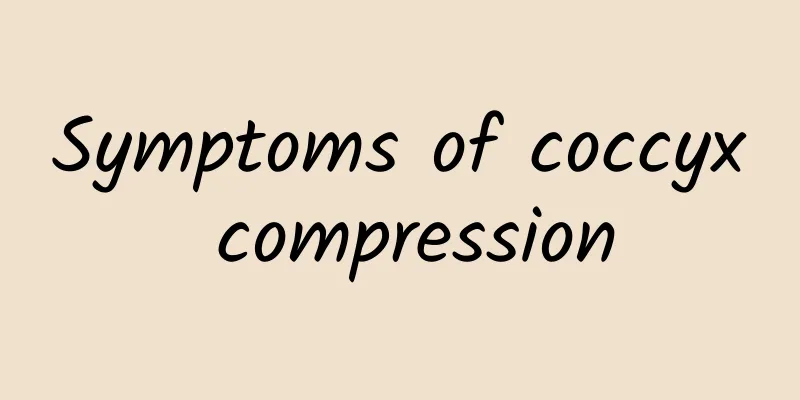Chronic pharyngitis tongue coating

|
I believe many people are familiar with the disease of chronic pharyngitis. There are many pathogenic factors, and it can be divided into many types according to the condition. The symptoms of many diseases have great similarities with chronic pharyngitis. In order to better confirm it, the condition of the tongue coating of chronic pharyngitis is a matter of concern to many people, and they hope to use this as a basis for judgment. So, what does the tongue coating of chronic pharyngitis look like? Let’s take a look below. Western medicine does not consider the problem of tongue coating. Pharyngitis is generally caused by infection, long-term spicy and irritating diet, poor surrounding environment, or severe gastric reflux. Clinical manifestations of chronic pharyngitis Chronic pharyngitis is more common in adults, but can also occur in children. Systemic symptoms are not obvious, and local symptoms are the main ones. The symptoms of various types of chronic pharyngitis are roughly similar and varied, such as discomfort in the throat, foreign body sensation, difficulty in coughing up pharyngeal secretions, itching, burning, dryness or irritation in the throat, and may also be slight pain. Since the posterior pharyngeal wall usually has thick secretions adhering to it due to chronic inflammation of the pharynx, and since lesions of the nose, sinuses, and nasopharynx cause mouth breathing at night, irritating coughs and nausea often occur in the morning. Frequent swallowing may occur due to the foreign body sensation in the throat. People with little pharyngeal secretions that are difficult to cough up often have habitual dry coughs and clearing the throat to expectorate. If you cough or clear your throat hard, it may cause bleeding of the pharyngeal mucosa, resulting in blood in the secretions. 1. Chronic simple pharyngitis Examination revealed chronic congestion of the pharyngeal mucosa, varicose small blood vessels, dark red color, and a small amount of viscous secretions on the surface. 2. Chronic hypertrophic pharyngitis Examination of the pharynx may reveal multiple granular follicular protrusions on the posterior pharyngeal wall, which appear chronically congested and sometimes fuse together. Cystic white spots may form on the tops of the lymphatic granules, and yellow-white exudate may be seen when they rupture. The lateral pharyngeal cord lymphoid tissue may thicken and become cord-like. 3. Chronic atrophic pharyngitis or chronic dry pharyngitis There are dry crusts on the pharynx and bad breath. Examination showed that the pharyngeal mucosa was dry and thin, and in severe cases, it was scaly and shiny. It may be covered with purulent dry crusts, and if the lesions extend to the Eustachian tube, it may cause tinnitus and hearing loss. Spreading to the larynx, it can cause hoarseness. 4. Reflux pharyngitis Pharyngeal examination is similar to that for chronic simple and hypertrophic pharyngitis. Laryngopharyngeal reflux may be accompanied by vocal cord nodules, vocal cord polyps, and hoarseness. The above symptoms are often aggravated by excessive use of the voice, sudden changes in climate, or changes in ambient temperature and humidity, especially atrophic and dry pharyngitis. treat 1. Remove the cause Quit smoking and drinking, and actively treat the primary diseases that cause chronic pharyngitis (acute pharyngitis, chronic inflammation of the nose and nasopharynx, reflux gastroesophageal disease, and improve work and living environment). 2. Lifestyle changes Perform appropriate physical exercise, maintain a normal work and rest schedule, eat a light diet, and maintain a good mental state to improve the local functional state of the pharyngeal mucosa by enhancing one's overall immune function. 3. Local treatment (1) Chronic simple pharyngitis can be treated by gargling with compound borax, furazolidone solution, etc. to keep the mouth and pharynx clean; or taking iodine lozenges, mint lozenges, etc. to treat chronic pharyngitis; Chinese medicine preparations also have a certain effect on chronic pharyngitis; compound iodine glycerin, 5% silver nitrate solution or 10% weak protein silver solution can be applied to the pharynx topically, which has astringent and anti-inflammatory effects; ultrasonic nebulization can relieve the symptoms of chronic pharyngitis; antibiotic treatment is generally not required. (2) Chronic hypertrophic pharyngitis is more difficult to treat and can be treated with reference to chronic simple pharyngitis. In addition to the above methods, the raised lymph follicles on the posterior pharyngeal wall can also be treated with chemical drugs or electrocoagulation, freezing or laser therapy. Chemical drugs often use 20% silver nitrate or chromic acid solution to burn enlarged lymph follicles. Electrocoagulation is rarely used nowadays due to its many side effects. Laser or radiofrequency therapy is often used to treat the posterior pharyngeal wall lymph follicles. The above methods of treating lymph follicles may increase mucosal scarring and may aggravate symptoms. In addition, ultrasonic atomization therapy, local ultraviolet irradiation and diathermy therapy also have auxiliary effects on hypertrophic pharyngitis. (3) Atrophic and dry pharyngitis are generally treated the same as chronic simple pharyngitis, but cauterization should not be used. Small doses of iodine can be taken or applied topically to the throat to promote increased secretion of the mucosal epithelium; ultrasonic nebulization therapy can also relieve dryness symptoms. Taking vitamins A, B2, C, and E can promote the growth of pharyngeal mucosal epithelial tissue. For patients with dry pharyngitis, caution should be exercised when considering tonsillectomy to avoid worsening of the condition after surgery. (4) For chronic allergic pharyngitis, avoid contact with various possible allergens, use antihistamines or mast cell stabilizers, and apply glucocorticoids and immunomodulators locally or systemically for a short period of time. (5) For chronic reflux pharyngitis, avoid eating foods that promote gastric acid secretion, such as chocolate, spicy foods, etc. to reduce reflux in the throat and reduce irritation to the pharyngeal mucosa; control the amount of food and water intake 3 to 4 hours before bedtime. In addition to the general treatment of chronic pharyngitis, gastric acid inhibitors and gastric mucosal protectants can be used in combination for treatment, while gastric diseases can be actively treated at the same time. |
<<: Chronic pharyngitis oral solution
>>: Can chronic inflammation heal on its own?
Recommend
Can vitamin B complex be taken for a long time?
When problems occur in various functions of the h...
How to cure athlete's foot
Many people will have athlete's foot. It is v...
Why is the glans penis sensitive after ejaculation?
The main function of the male penis is to reprodu...
The effects and functions of soaking black wolfberry and chrysanthemum in water
It is not easy to have conflicts when drinking te...
Is it normal for teenagers to have breast lumps?
If teenagers have lumps in their breasts, they sh...
28 weeks hard belly
Watching their bellies grow day by day, many preg...
What causes gastritis?
Nowadays, due to the increasingly fierce competit...
Excessive sweating, herpes, itchy skin...these are actually early symptoms of diabetes
If your skin is always itchy, this may be a "...
Conservative treatment of renal rupture
The kidneys are the main organs that control a pe...
The efficacy, function and edible method of Imperata root
Imperata root is a kind of Chinese medicine. Its ...
What are the symptoms of lumbar compression fractures?
Lumbar compression fracture is a type of spinal f...
How to use cypress branches to treat hair loss
Cypress branches have a certain effect in treatin...
Eight-month-old baby's teeth turn yellow
The main reason why the teeth of eight-month-old ...
Eye mucus
People always ignore various small details in lif...
What to do if you are poisoned by aconitine
There are many things in life that you need to pa...









